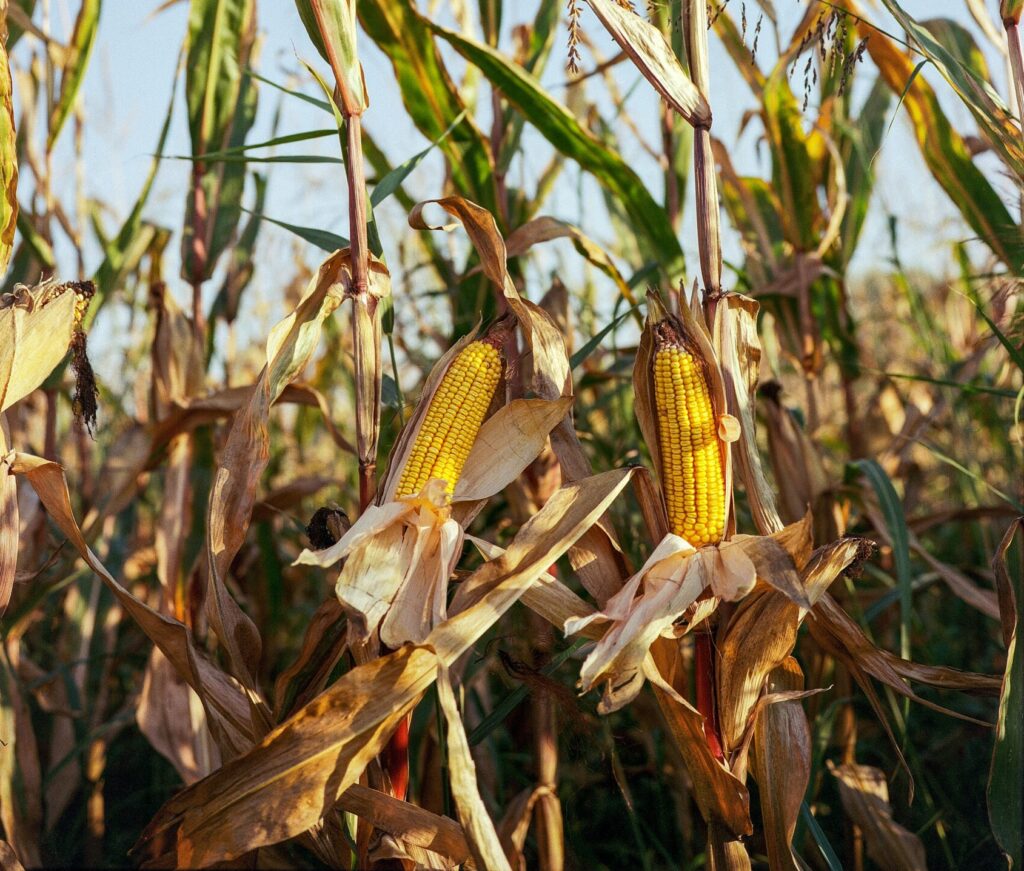Corn is a water-intensive crop that requires precise irrigation to reach its full potential. Understanding the crop’s moisture needs across different growth stages can help maximize yields and reduce the risk of water stress. Below is a breakdown of the water requirements and irrigation techniques that contribute to effective corn cultivation.

1. Water Requirements Across Growth Stages
Corn’s water needs vary depending on its growth stage, with specific periods when water is critical to yield:
- Early Growth (Germination to Vegetative Stage): Corn requires adequate moisture during germination and early growth stages to establish a strong root system. During this time, light watering helps avoid oversaturation. On average, corn needs about 1 inch of water per week during this stage, either from rainfall or supplemental irrigation.
- Tasseling and Silking (Reproductive Stage): The peak water demand for corn occurs from tasseling through the silking period and during grain filling. During tasseling and silking, corn can need up to 1.5 to 2 inches per week to support optimal ear and kernel development. Even short periods of water stress at this stage can significantly reduce yield, as it impacts pollination and kernel set.
- Grain Filling to Maturity: After silking, as the kernels fill, corn still requires moisture but at a slightly reduced rate. Watering can taper off towards the end of the growing season, as corn plants prepare for harvest. Reducing water late in the season also helps to dry down the grain, making it easier to store.
2. Best Irrigation Techniques for Corn
Efficient irrigation methods help conserve water while meeting the crop’s demands. Key methods include:
- Drip Irrigation: Ideal for conserving water, drip irrigation delivers water directly to the root zone. Although more commonly used for crops with lower water demands, drip systems can be adapted for corn in areas with limited water resources. Drip systems reduce evaporation and provide consistent moisture, though they can be cost-prohibitive for large fields.
- Sprinkler Systems: Center-pivot or lateral move sprinkler systems are popular in large-scale corn farming. They distribute water evenly and can be managed to avoid excessive water loss due to evaporation. Sprinkler systems allow for more precise control of water application during critical growth stages.
- Furrow Irrigation: In regions with abundant water, furrow irrigation is a traditional and economical method where water flows down shallow ditches or furrows between crop rows. However, it is less efficient in water conservation and can lead to uneven distribution, especially in sloped areas.
3. Managing Soil Moisture and Irrigation Scheduling
Maintaining proper soil moisture levels is critical for high corn yields. Farmers can monitor soil moisture through methods like tensiometers, soil moisture sensors, or simply by inspecting soil texture at root level. Scheduling irrigation based on weather forecasts and soil moisture levels ensures that water is applied only when necessary, minimizing waste and preventing root diseases associated with waterlogging.
4. Water Conservation Tips
Efficient water management practices for corn include:
- Mulching: Mulching helps retain soil moisture by reducing surface evaporation. This technique can be particularly useful in dry climates or areas with limited water resources.
- Crop Rotation: Growing corn in rotation with legumes or other crops helps improve soil structure, which retains moisture better and requires less frequent irrigation.
- Reduced Irrigation Late in Season: Tapering off water applications as the crop approaches maturity reduces water usage while promoting natural drying of the grain before harvest.
Corn has significant water requirements, especially during critical stages like tasseling and silking. By tailoring irrigation schedules to the crop’s growth stages and using efficient methods like drip or sprinkler systems, farmers can support high yields while conserving water resources. Monitoring soil moisture and adjusting irrigation based on weather conditions further enhances efficiency, ensuring that each drop counts toward a productive corn harvest.
















